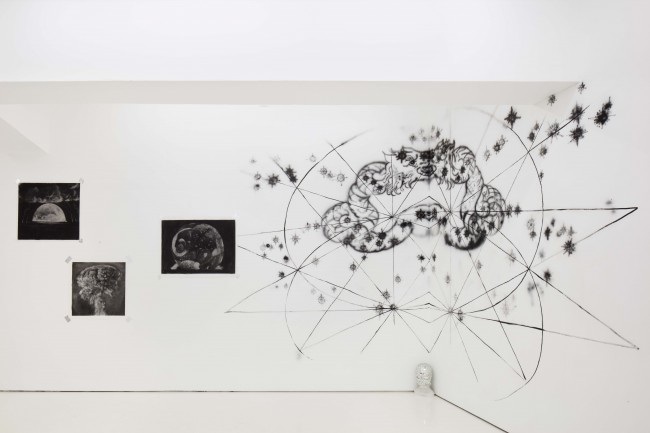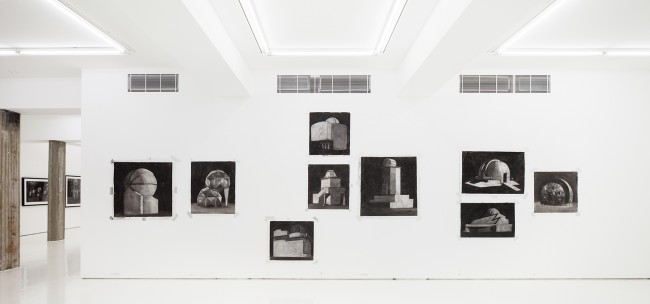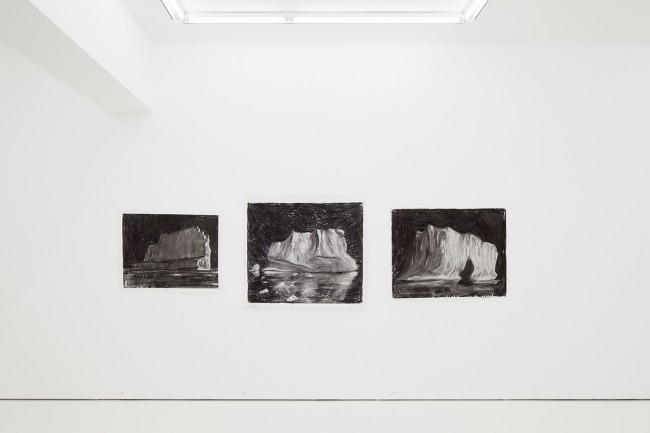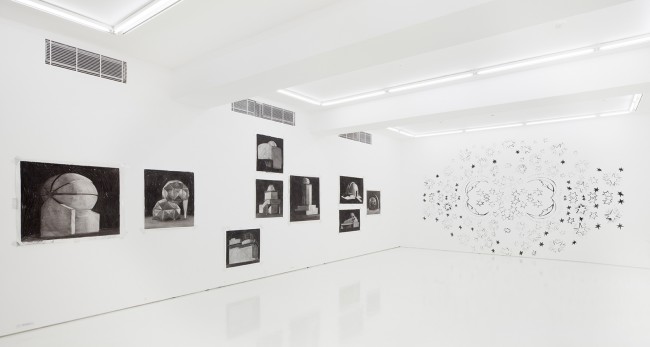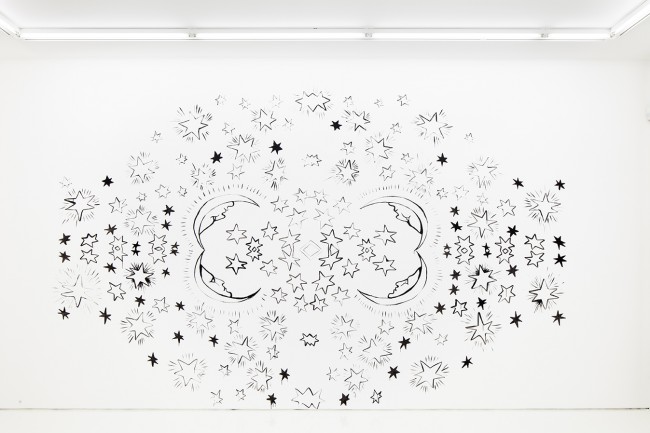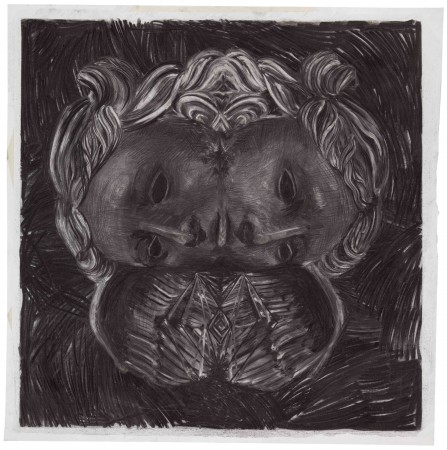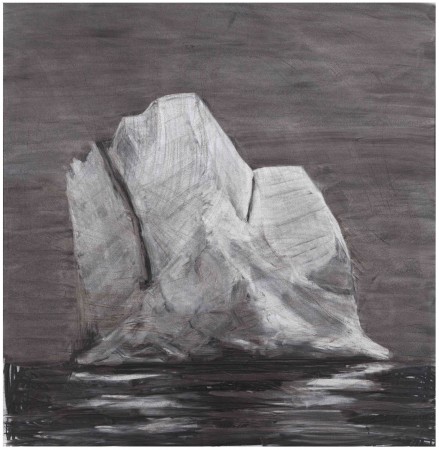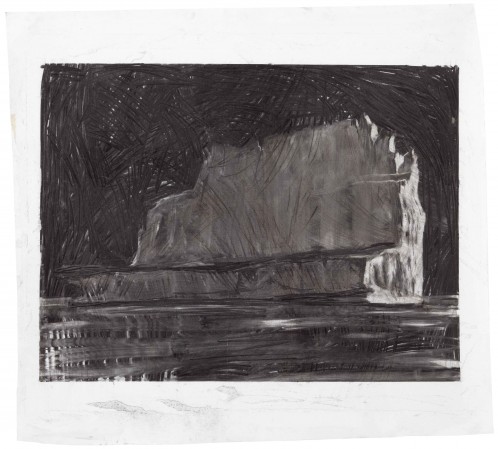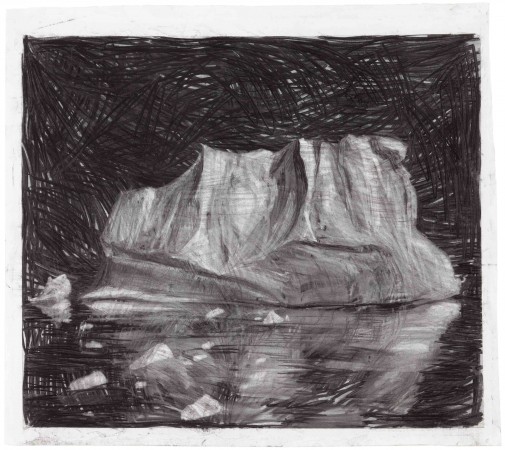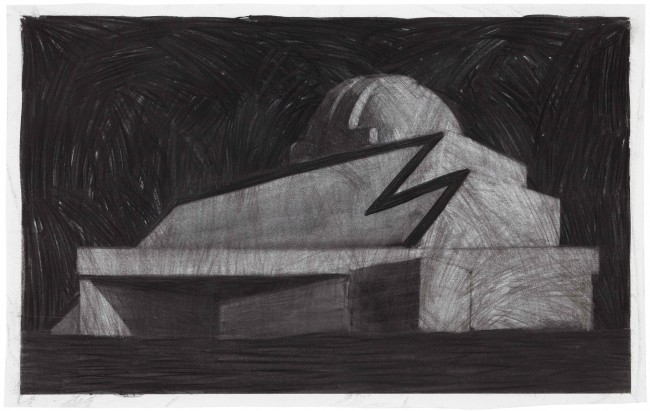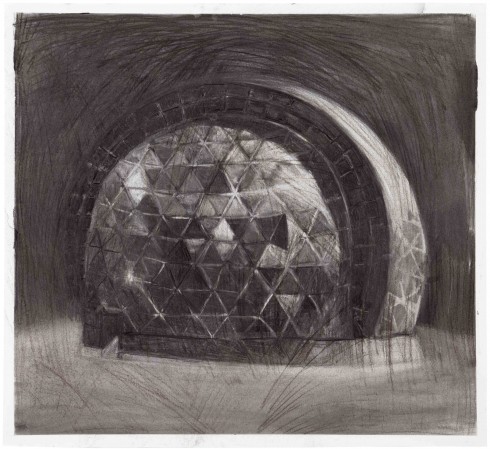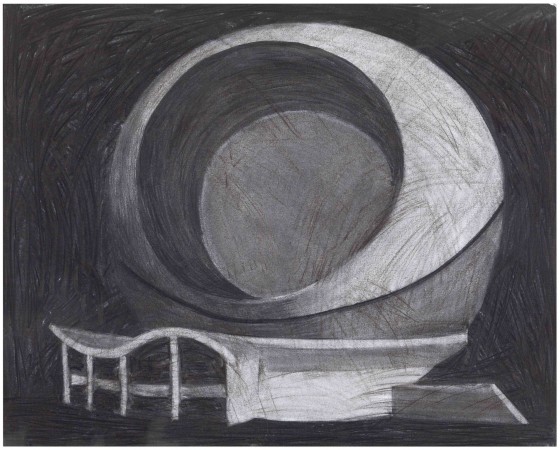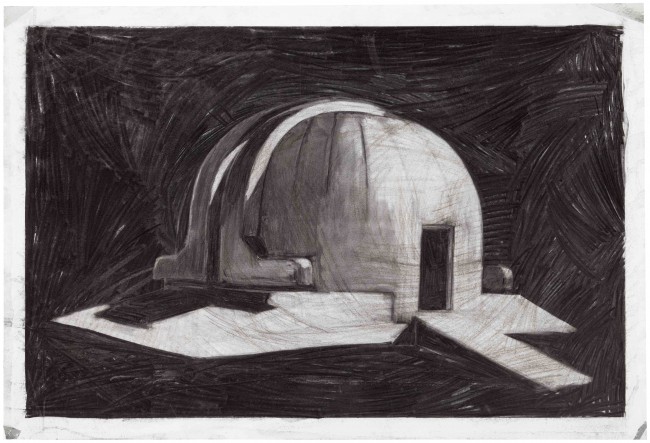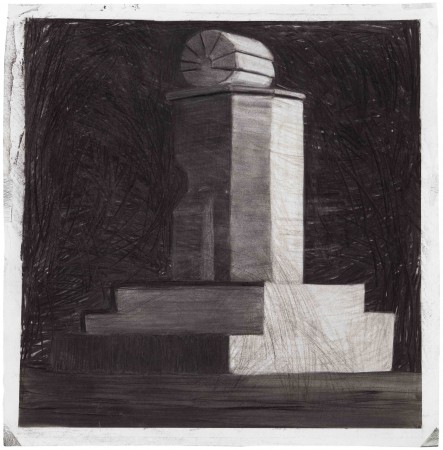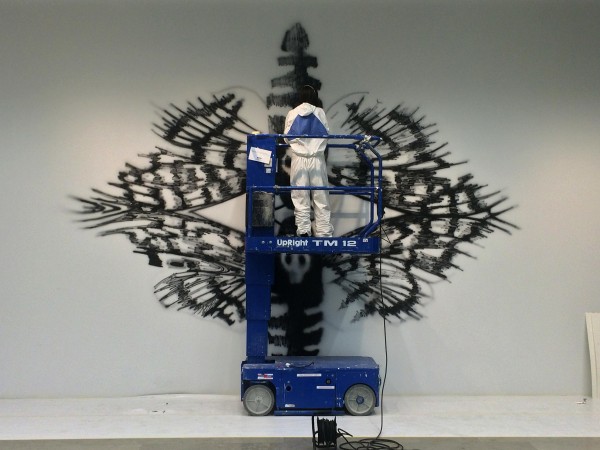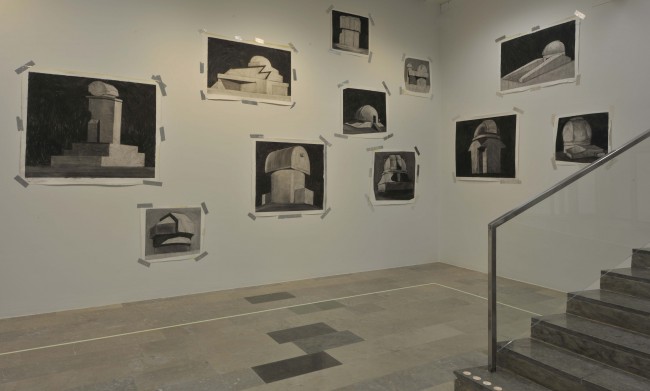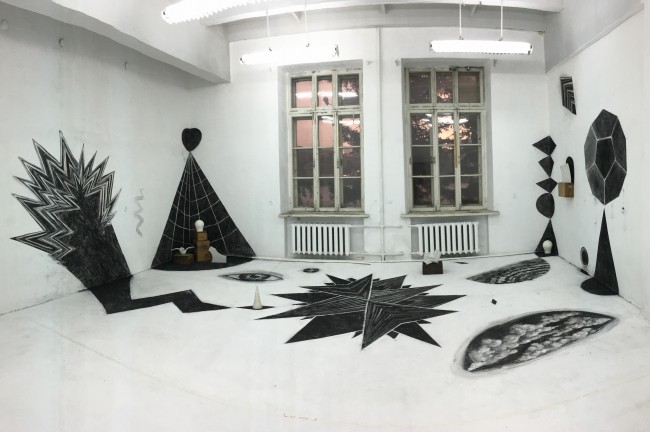
No title /Treasury
Compositions, graphics, objects
Underground caches, malachitnitsa with a long braid, silver hoof, cat ears with green lights – perhaps all these are nothing more than visions of tired workers, fantasies of the exhausted and lost hope. Perhaps P.P. Bazhov collected them being faithful to the place, where eyewitnesses saw them, where they sprouted through hard work, where he was born.
Sysert has shown Hannaleena Heiska three of its sides. Bazhov's tales is one of them, the other is Sysert porcelain factory and the third one – at different ends connected with the first two – is the historical existence of Sysert as a city-plant.
In the 18th and 19th centuries the most difficult type of work at the Ural plants was charcoal burning. These workers received the smallest wages, were the least educated people, spent much time in the woods, they knew and loved forests, although their work was designed to destroy them. By the beginning of the twentieth century furnaces of plants had devoured almost the entire local pinewood forest – to replace ancient impassable pagan forests there came weed-birches or emptiness around the cities.
Now charcoal has lost its industrial importance and – with a certain disregard for picnics – its artistic use has become almost the main one. In her work Hannaleena Heiska uses charcoal as the key material. The objects found on the site or brought from the Sysert porcelain factory (meeting real production) add to the compositions. The stories told by Bazhov appear as hints, metaphors and allegories in an abstract drawing based and led by improvisation and movement.
Zhenya Chaika
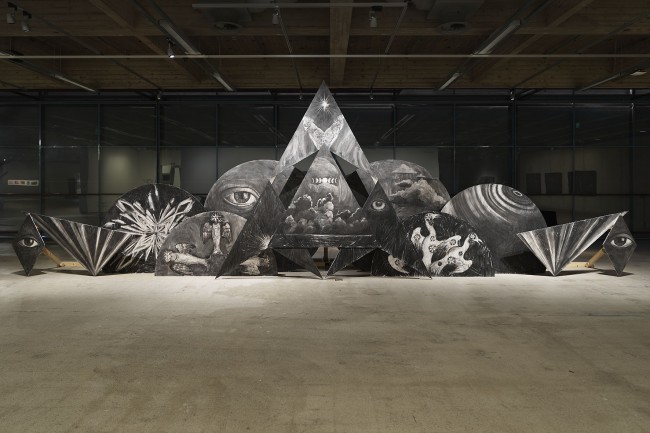
Hannaleena Heiska's stage-like construction and imagery invite us to search for our location in an infinite and timeless nocturnal star chart. Borrowing its underlying structure from an uranometric star chart, Something There Is continues Heiska's Observatory motifs (2014-2015) and her paintings series Blade Runner (All Those moments will be lost in time like tears in rain, 2013), which was inspired not only by the artist's favourite movie or pop music but also by philosophical ideas concerning animals and examinations of humanity. Fireworks of colour have been replaced by charcoal, a demanding and slow technique that, referring carbon - the vital organic substance in the cycly of life - adds a new dimension to Heiska's exploration of the continuity of life.
Heiska has for a long time been interested in the idea of a multiverse, or a system of parallel universes. Is it possible that we can continue to exist after death in some other dimension, in another universe, of that might we even exist even at this very moment somewhere else? Life after death, the fate of our consciousness after the demise of our physical body, remains a mystery. Perhaps humanity will one day become a multi-planetary species, as some scientists have envisioned.
What hidden physical mechanism keeps the universe going? According to one theory, reality is a hologram, like a movie projected onto a screen, that would explain all our supernatural, mystical and spiritual experiences. Our knowledge of string theory, of the energy in black holes and of the location of the event horizon, grows constantly. The media draw their content from an endless flow of information and beliefs, conveying them to us on different channels. Finding one's worldview and purpose in life amids this flood of information and belief is becoming even more difficult. The spectrum of possibilities is simultaneously comforting and oppressive. There is strangely ordered chaos in Heiska's three-dimensional construction of mirror images and fragments of old star maps. In spite of the abudance of information and observations, I realise how little I understand our world.
Tiina Penttilä

Hannaleena Heiska's stage-like construction and imagery invite us to search for our location in an infinite and timeless nocturnal star chart. Borrowing its underlying structure from an uranometric star chart, Something There Is continues Heiska's Observatory motifs (2014-2015) and her paintings series Blade Runner (All Those moments will be lost in time like tears in rain, 2013), which was inspired not only by the artist's favourite movie or pop music but also by philosophical ideas concerning animals and examinations of humanity. Fireworks of colour have been replaced by charcoal, a demanding and slow technique that, referring carbon - the vital organic substance in the cycly of life - adds a new dimension to Heiska's exploration of the continuity of life.
Heiska has for a long time been interested in the idea of a multiverse, or a system of parallel universes. Is it possible that we can continue to exist after death in some other dimension, in another universe, of that might we even exist even at this very moment somewhere else? Life after death, the fate of our consciousness after the demise of our physical body, remains a mystery. Perhaps humanity will one day become a multi-planetary species, as some scientists have envisioned.
What hidden physical mechanism keeps the universe going? According to one theory, reality is a hologram, like a movie projected onto a screen, that would explain all our supernatural, mystical and spiritual experiences. Our knowledge of string theory, of the energy in black holes and of the location of the event horizon, grows constantly. The media draw their content from an endless flow of information and beliefs, conveying them to us on different channels. Finding one's worldview and purpose in life amids this flood of information and belief is becoming even more difficult. The spectrum of possibilities is simultaneously comforting and oppressive. There is strangely ordered chaos in Heiska's three-dimensional construction of mirror images and fragments of old star maps. In spite of the abudance of information and observations, I realise how little I understand our world.
Tiina Penttilä
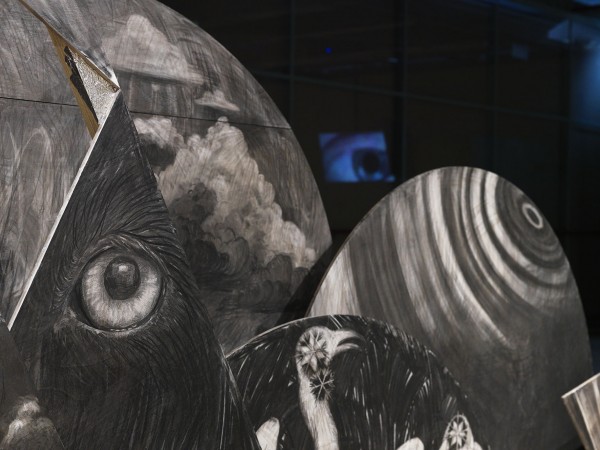
Hannaleena Heiska's stage-like construction and imagery invite us to search for our location in an infinite and timeless nocturnal star chart. Borrowing its underlying structure from an uranometric star chart, Something There Is continues Heiska's Observatory motifs (2014-2015) and her paintings series Blade Runner (All Those moments will be lost in time like tears in rain, 2013), which was inspired not only by the artist's favourite movie or pop music but also by philosophical ideas concerning animals and examinations of humanity. Fireworks of colour have been replaced by charcoal, a demanding and slow technique that, referring carbon - the vital organic substance in the cycly of life - adds a new dimension to Heiska's exploration of the continuity of life.
Heiska has for a long time been interested in the idea of a multiverse, or a system of parallel universes. Is it possible that we can continue to exist after death in some other dimension, in another universe, of that might we even exist even at this very moment somewhere else? Life after death, the fate of our consciousness after the demise of our physical body, remains a mystery. Perhaps humanity will one day become a multi-planetary species, as some scientists have envisioned.
What hidden physical mechanism keeps the universe going? According to one theory, reality is a hologram, like a movie projected onto a screen, that would explain all our supernatural, mystical and spiritual experiences. Our knowledge of string theory, of the energy in black holes and of the location of the event horizon, grows constantly. The media draw their content from an endless flow of information and beliefs, conveying them to us on different channels. Finding one's worldview and purpose in life amids this flood of information and belief is becoming even more difficult. The spectrum of possibilities is simultaneously comforting and oppressive. There is strangely ordered chaos in Heiska's three-dimensional construction of mirror images and fragments of old star maps. In spite of the abudance of information and observations, I realise how little I understand our world.
Tiina Penttilä
